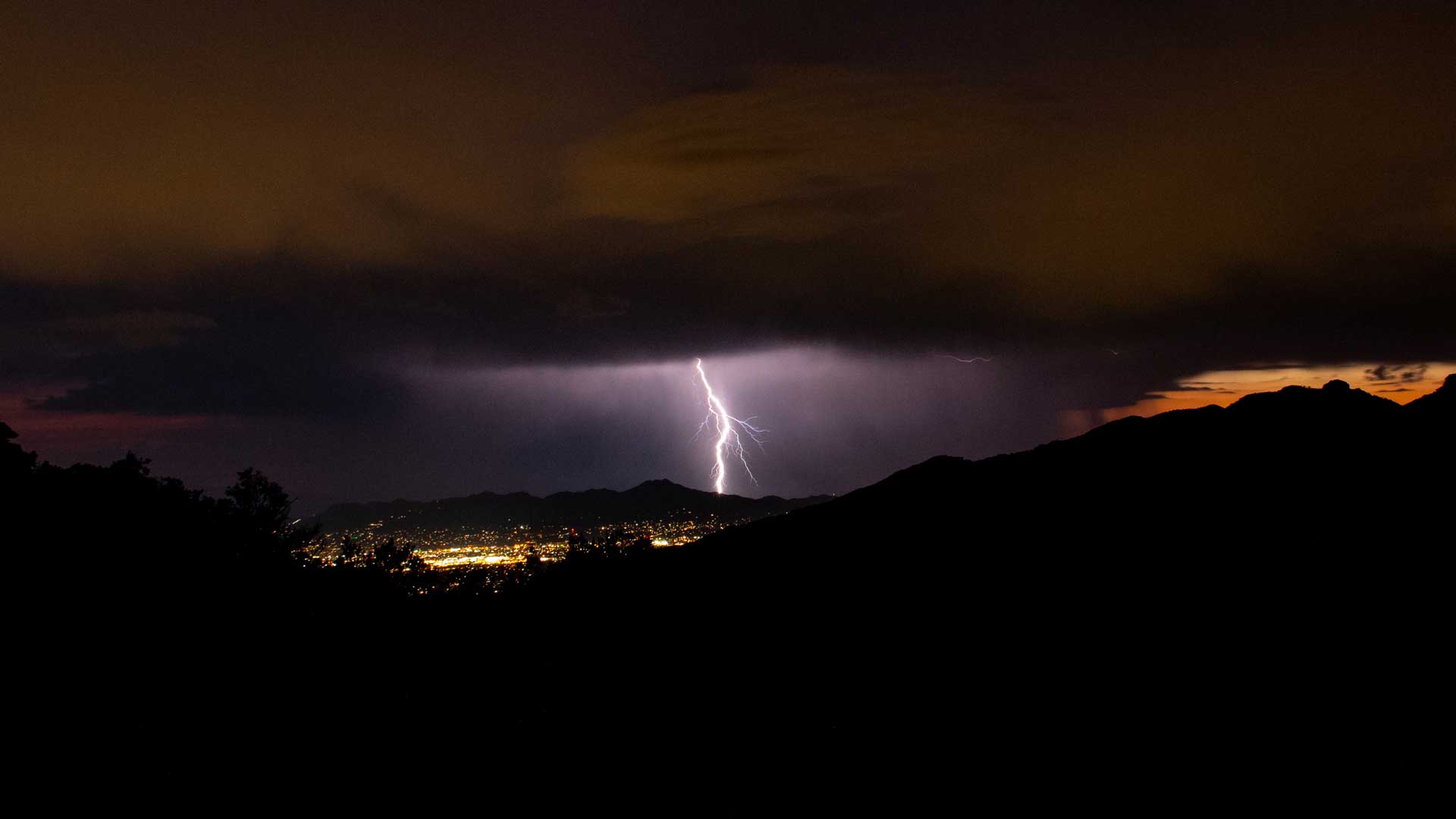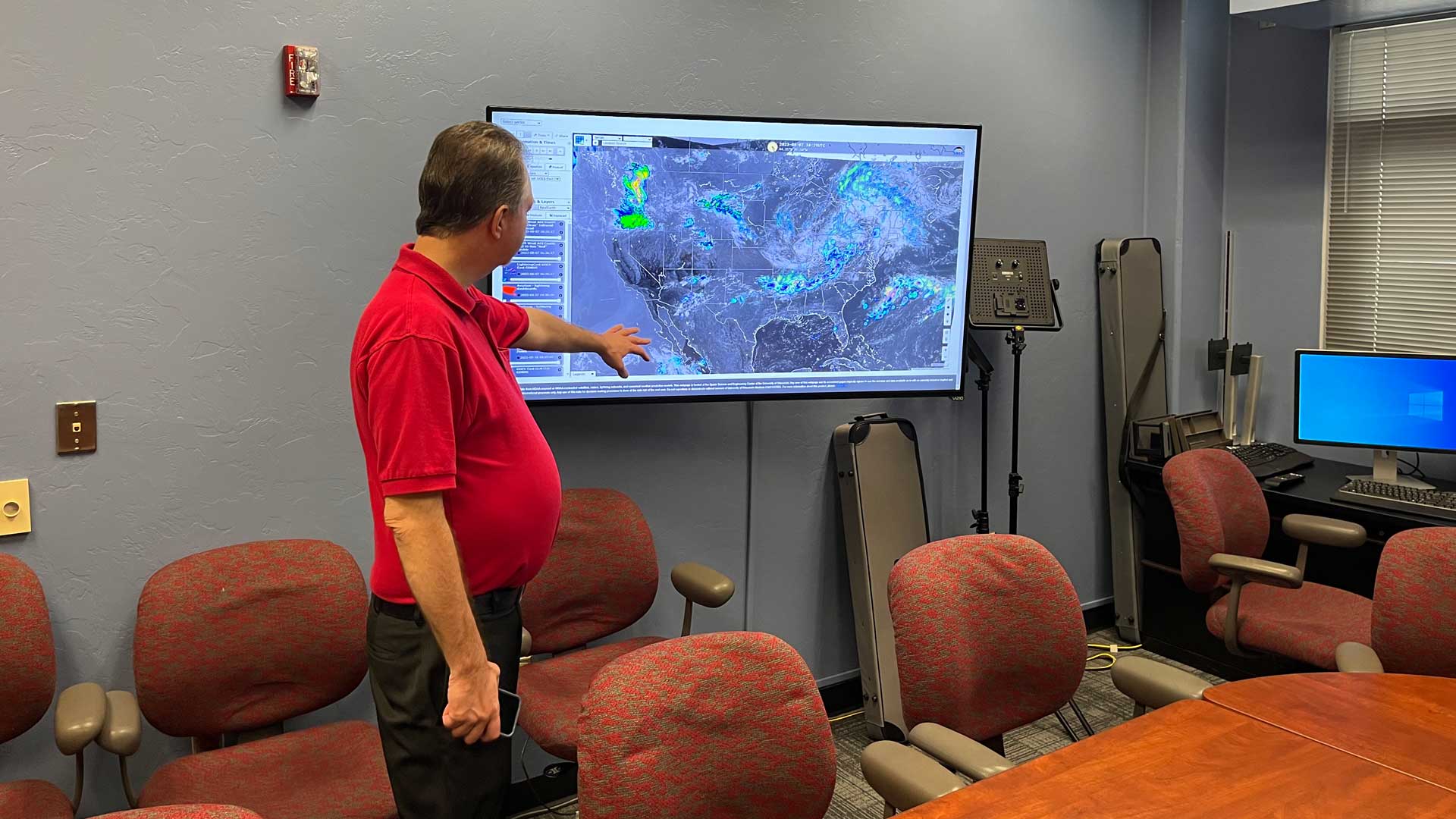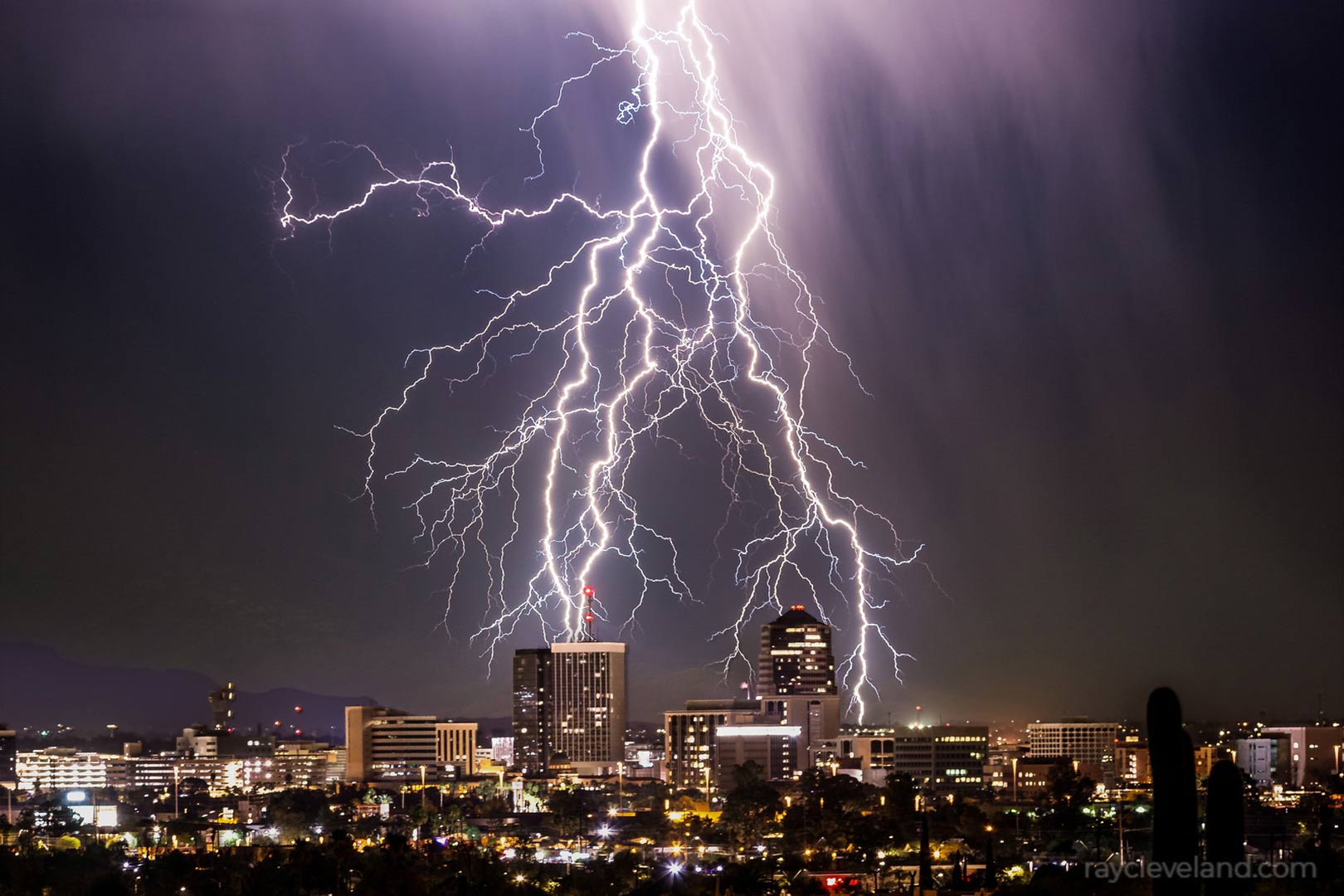 Lightning flashes over the Tucson mountains as seen from Windy Point in the Santa Catalina mountains.
Lightning flashes over the Tucson mountains as seen from Windy Point in the Santa Catalina mountains.
The Buzz for August 11, 2023

Those who've lived in Arizona before know the short and sometimes extreme storm activity that often accompanies a monsoon.
Those bursts can bring high winds, downpours of rain, and lightning that can be spectacular or terrifying, depending on your location.
"During the season of July, August, and September, in Arizona, we actually have 90 percent of our lightning," said Ron Holle, a meteorologist who co-authored with Dr. Daile Zhang the book Flashes of Brilliance: The Science and Wonder of Arizona Lightning.
Those strikes, when not accompanied by a notable amount of rain or humidity, can lead to an increase in wildfire activity. In fact, such natural fire starts have become a part of western landscape ecosystems, allowing for a natural clearing of dead and down vegetation.
“I think the figure for the western states in terms of forest fires is that two-thirds or even more of forest fires in the continental divide west are due to lightning and those are natural and those have always been there,” said Holle.
Given the danger that lightning can represent, the National Weather Service and other agencies pay close attention to when it strikes the ground. NWS works with private-sector companies that provide them with data from their sensors.
"We can overlay that on top of radar data and on top of satellite data, and it helps us to get a total picture of what's going on with thunderstorms," said Ken Drozd, Warning Coordination Meteorologist, National Weather Service office in Tucson. "Plus, in areas where maybe there isn't the best radar coverage, we can use that lightning to help fill in the gaps. So that helps us to monitor the intensity of thunderstorms and that helps us with the warning process."
 NWS meteorologist Ken Drozd points out how software can track lightning strikes.
NWS meteorologist Ken Drozd points out how software can track lightning strikes.
That information goes into the warnings that arrive to the public from various means, including our smartphones. It also goes into building the knowledge that we have about lightning.
"We are doing some research on the relationship between what we're calling lightning jumps, or large increases in the number of lightning strikes that may occur over a 5 to 10-minute period within an individual thunderstorm, and trying to relate that to whether that's a trigger for when the storms become severe or start producing damaging winds and hale."
Those intense storms can often produce an abundance of lightning ins a short amount of time, and that concentration leads some to wrongly think of the area as the lightning capital of the U.S. While Florida and other gulf coast states do receive more lightning in a year, the condensed nature of Southern Arizona's lightning led Holle and his co-author to dub the area "The Lightning Photography Capital of the U.S."
That concentration of lightning caught born-and-raise Tucsonan Ray Cleveland's attention early. He is now a professional photographer and lightning photography is among his specialties.

"2006 was the very first lightning bolt I captured. It was on the 4th of July, which is usually when all of the monsoon storms start here with the exception of this year. It was a handheld shot with my point-and-shoot camera, and I got some fireworks and lightning in the same shot. I wasn't able to recreate it until years later."
Cleveland offered some tips on how to catch lightning shots: use a prolonged exposure with an f-stop that is not lower than expected. He also recommends using a tripod and a shutter remote that allows the photographer to control when a shot is taken or how long the exposure is without touching the camera.
Another area of particular concern with taking lightning photography is safety while in a storm.
"When this whole town is covered with rain, you can't find too much of a safe location. Parking garages are popular, though there are some with security that will kick you out," he said, noting that staying on floors below the top provides cover from rain and lightning strikes.
"There is a lot of risk, and the safest place is usually in your car, but when you're setting up your camera outside your car there is still that risk that it's basically a lightning rod. There have been days where I've been terrified to pick up my camera because the lightning is coming."
He recommends staying out of storms and using a lightning-tracking app to find a safe place to photograph lightning from a distance.


By submitting your comments, you hereby give AZPM the right to post your comments and potentially use them in any other form of media operated by this institution.